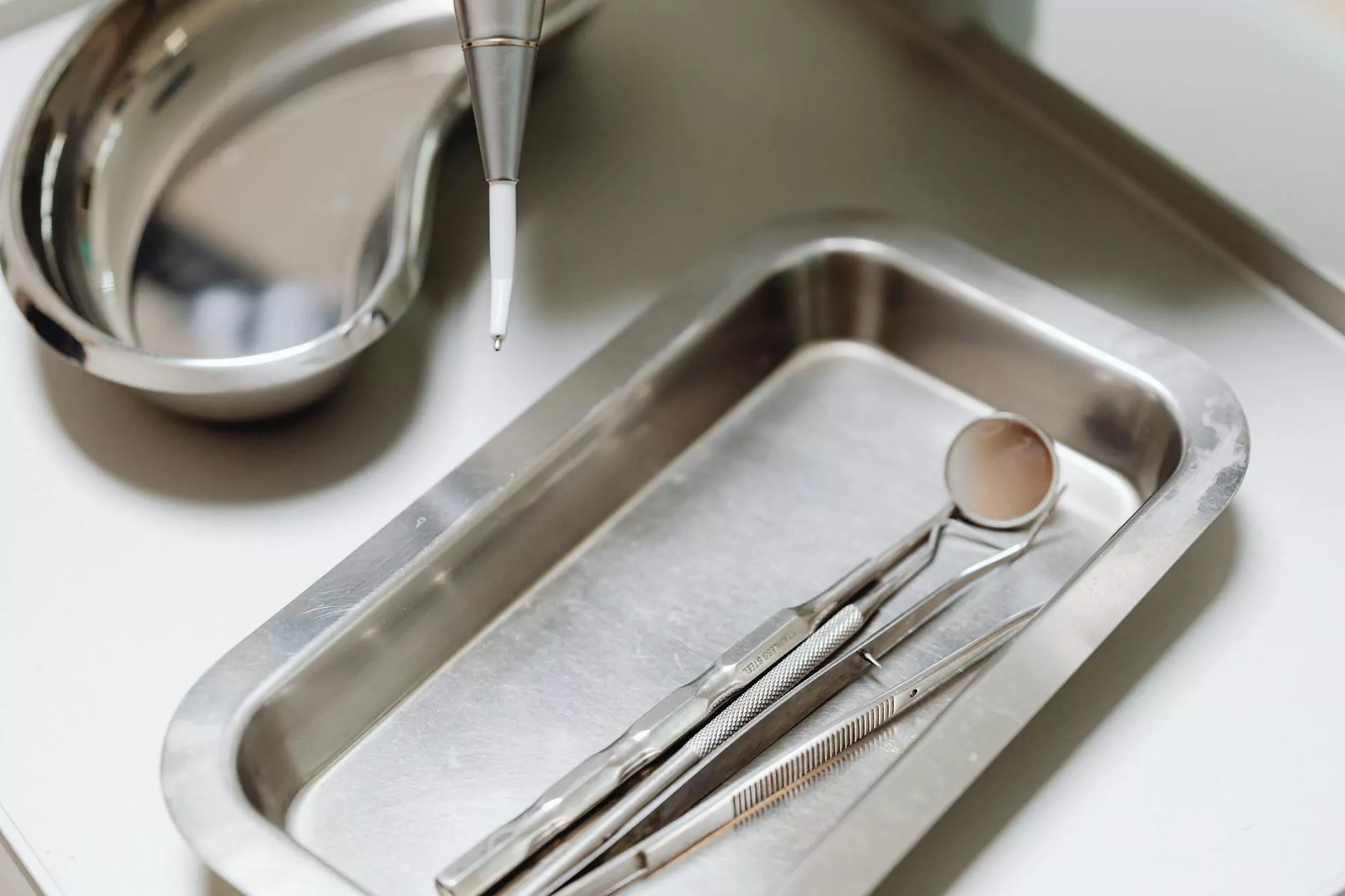Understanding the Removal of Fibroids Operation: A Complete Guide by Leading Obstetricians & Gynecologists

Fibroids, also known as uterine leiomyomas or fibromyomas, are non-cancerous growths that develop within or on the muscular wall of the uterus. These benign tumors are incredibly common among women of reproductive age, affecting up to 70-80% of women by age 50. While many women with fibroids experience no symptoms, others may face significant health issues such as heavy menstrual bleeding, pelvic pain, pressure symptoms, and fertility challenges.
The Importance of Expert Medical Intervention for Fibroids
For women experiencing symptoms or complications caused by fibroids, seeking specialized care from experienced doctors, obstetricians, and gynecologists is crucial. A refined understanding of treatment options, including surgical removal, can drastically improve quality of life and reproductive health.
Why Consider the Removal of Fibroids Operation?
The removal of fibroids operation is generally recommended in cases where fibroids:
- Cause significant symptoms such as abnormal bleeding, pain, or pressure.
- Impact fertility or cause recurrent pregnancy loss.
- Grow rapidly or reach large sizes that threaten uterine health or complicate pregnancy.
- Entail suspicion of malignancy (rare but possible in certain cases).
Choosing the right surgical approach depends on factors like fibroid size, number, location, patient's age, reproductive plans, and overall health. The expertise of a seasoned doctor ensures personalized treatment, minimizing risks and maximizing outcomes.
Types of Surgical Procedures for Fibroid Removal
1. Myomectomy: Preserving Fertility and Uterine Function
The myomectomy is a surgical procedure designed to excise fibroids while preserving the uterus, making it an ideal choice for women who wish to maintain fertility. It can be performed through various approaches:
- Hysteroscopic myomectomy: Using a hysteroscope inserted through the vagina and cervix for submucosal fibroids.
- Laparoscopic myomectomy: Minimally invasive removal of fibroids through small abdominal incisions with the aid of a laparoscope.
- Open abdominal myomectomy: Traditional surgery with a larger incision, suitable for extensive or multiple fibroids.
This procedure effectively alleviates symptoms and can significantly improve fertility outcomes in suitable candidates.
2. Hysterectomy: Complete Removal of the Uterus
Hysterectomy involves the removal of the entire uterus and is typically reserved for women who no longer desire future pregnancy or when fibroids cause severe symptoms unresponsive to other treatments. It can be performed through:
- Laparoscopic hysterectomy
- Vaginal hysterectomy
- Abdominal hysterectomy
This method guarantees the definitive treatment of fibroids but at the cost of uterine removal.
3. Uterine Artery Embolization (UAE): A Minimally Invasive Option
UAE is a non-surgical, minimally invasive procedure performed by interventional radiologists. It involves blocking blood flow to fibroids, causing them to shrink and die. This outpatient procedure preserves the uterus and is an excellent alternative for women seeking symptom relief without surgery.
Advantages of the Removal of Fibroids Operation at Top Medical Centers
Leading medical institutions, such as drseckin.com, offer cutting-edge surgical techniques with a focus on:
- Advanced minimally invasive approaches including laparoscopy and hysteroscopy.
- Expert surgical teams with extensive experience in complex fibroid cases.
- State-of-the-art diagnostic tools such as MRI and ultrasound to precisely locate and assess fibroids.
- Personalized treatment plans tailored to each woman's reproductive goals and health status.
What to Expect During the Removal of Fibroids Operation
Before surgery, comprehensive evaluations—such as ultrasound imaging, MRI scans, and blood tests—are performed. During the procedure:
- The patient is given anesthesia to ensure comfort and safety.
- The surgeon makes the necessary incisions based on the approach (laparoscopic, hysteroscopic, or open).
- Fibroids are carefully excised or treated, with meticulous attention to minimizing blood loss.
- The surgical site is closed, and postoperative recovery begins with close monitoring.
Postoperative Care and Recovery
Recovery varies depending on the type of surgery performed:
- Myomectomy: Usually involves a hospital stay of 1-3 days with restrictions on strenuous activity for several weeks.
- Hysterectomy: Longer hospital stay and recovery period, with detailed post-op instructions to prevent complications.
- Uterine Artery Embolization: Often done on an outpatient basis with minimal downtime.
Follow-up appointments are essential to monitor healing, manage pain, and ensure symptoms resolve effectively.
Risks and Considerations in the Removal of Fibroids Operation
While generally safe, surgical procedures carry potential risks, including:
- Bleeding during or after surgery
- Infection
- Adhesion formation
- Recurrence of fibroids
- Uterine rupture in women who undergo myomectomy and later conceive
Working with a highly experienced obstetrician or gynecologist significantly minimizes these risks. Choosing a reputable healthcare provider like drseckin.com ensures access to top-tier surgical expertise and advanced facilities.
The Future of Fibroid Management: Innovations and Emerging Treatments
Advances in medical technology continually refine fibroid treatment options. Emerging therapies include:
- Focus Ultrasound Surgery (FUS): A non-invasive technique using high-frequency ultrasound waves to destroy fibroids.
- Medical therapies: Including hormonal treatments to shrink fibroids and control symptoms.
- Robotic surgery: Enhanced precision and reduced recovery times in fibroid surgery.
Patients are encouraged to consult with specialized healthcare providers to explore the most suitable options based on current medical advancements and individual health profiles.
Why Choose Expert Obstetricians & Gynecologists for Your Fibroid Treatment?
Expert doctors possess:
- In-depth understanding of fibroid pathology and reproductive health.
- Proficiency in advanced surgical techniques to ensure safety and effectiveness.
- Personalized approach to align treatment with your reproductive plans and lifestyle.
- Postoperative support to facilitate smooth recovery and long-term health.
Contact a Leading Medical Center Today
If you are considering removal of fibroids operation or want comprehensive evaluation and personalized treatment options, visit drseckin.com. Our team of top-tier obstetricians and gynecologists specializes in minimally invasive, safe, and effective fibroid management, aiming to restore your health, fertility, and quality of life.
In Conclusion
Managing fibroids through expert surgical intervention offers a path to relief from symptoms, improved fertility prospects, and overall well-being. Staying informed about the latest techniques, understanding your options, and choosing experienced healthcare providers are key to successful outcomes. Embrace the benefits of modern medicine by consulting with specialist obstetricians and gynecologists for tailored, safe, and effective removal of fibroids operation.









